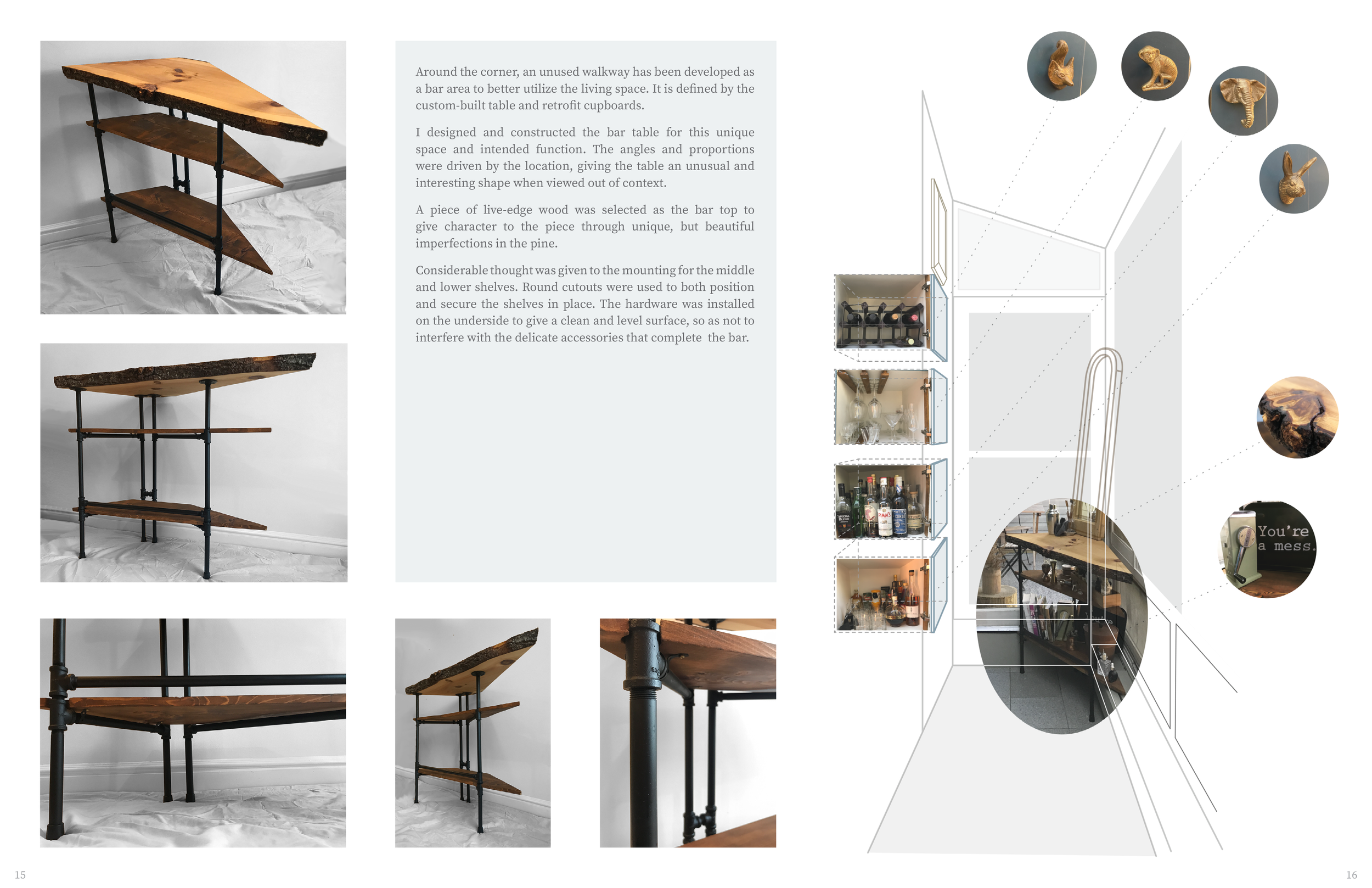Mechanical engineer shifts to architecture for greater creativity
Kimberly Casemore was a confident and capable mechanical engineer. After graduating with distinction from the University of Alberta in 2015 with a Bachelor of Science in Mechanical Engineering, she worked in manufacturing for four years.
“I was drawn to mechanical engineering because I liked how tangible it is,” says Kimberly, who worked mostly in the oil and gas industry in Alberta. “The courses I enjoyed most in university were those that involved design projects or 3D modeling, which led me to pursue work in manufacturing.”
Engineering work by Kimberly Casemore that was included in her architecture school applications.
She discovered while doing calculations and technical analysis for system requirements that she most enjoyed designing for people's interaction with the processes and equipment involved.
For example, she designed an equipment trailer for use in oil and gas operations that integrates several functions and activities into one cohesive unit.
"I am interested in creating elegant designs for the operator,” she says. “My favourite jobs have been when I was required to think about how a person would interact, use, and view my design."
Kimberly Casemore
“I don’t think I would have been accepted or received funding offers if I hadn’t done STUDIO FIRST.”
Kimberly tested her passion and commitment to a design future by taking the online STUDIO FIRST program in 2020.



Work made in STUDIO FIRST by Kimberly Casemore and used in architecture school applications.
After deciding to pursue a Master of Architecture, she applied to three schools in Canada and was accepted by all of them. She chose Carleton University, where she is in her second year of the three-year program and looking ahead to creative and fulfilling job opportunities.
"I envision working somewhere between engineering and architecture, such as industrial design or product development, or pursuing small-scale residential design focused on sustainability and energy-efficient systems."
Studio work by Kimberly Casemore from first-year fall semester
How did you decide to make the switch to architecture?
I enjoyed the design aspects of engineering but wanted to pursue more creative work and open my career options to more industries.
How did STUDIO FIRST help?
STUDIO FIRST helped by giving me a trial run of the architecture design process to see if I would enjoy it before committing to going back to school. But more practically, it provided project work and an understanding of what a portfolio should be for grad school applications. I don’t think I would have been accepted or received funding offers if I hadn’t done STUDIO FIRST.
Studio work by Kimberly Casemore from first-year winter semester
How did you negotiate a career change?
It was a long process (around a year and a half) that involved a lot of research and reaching out to people in the field to understand what the career would look like after grad school. I needed to decide if the change was worth stepping back from what I had created for myself in engineering. Once I decided it was something I was interested in pursuing, I started working on my application – which is where STUDIO FIRST was extremely valuable.
How many schools did you apply to? How many acceptances did you receive?
I applied to three schools (Carleton University, University of Toronto, and University of British Columbia) and was accepted to all of them.
Studio project by Kimberly Casemore from first-year spring semester
Why did you choose Carleton?
There is a variety of factors when selecting a school that is unique to every person. My decision to come to Carleton was based on a combination of location, travel opportunities, funding, program size, and project work (of both students and professors) coming out of the school.
How would you describe your experience of the first year of the MArch 1 program?
It was challenging and overwhelming at times, but I learned and progressed so much. It is very fast-paced, but your classmates are going through the same situation, so everyone helped each other to get through.
Work by Kimberly Casemore from second-year Gateway Studio
What has been the biggest challenge/obstacle?
The biggest challenge was starting a graduate-level program with minimal experience in architecture prior to the program. It required a lot of self-learning and work outside of class to learn software, drawing standards, and workflows.
How did you overcome it?
Manage your expectations. Everyone comes into the program with different levels of experience and will progress at different rates. With project-based work, especially architecture, there isn’t a set “finished” point. Work hard but manage your time, so you don’t burn out. The skills will come, and you have three years in the program – you won’t know everything in your first project.
Project from second-year Gateway Studio by Kimberly Casemore
What has been the best part?
The people. Having a small class size made it easier to make friends and learn from my colleagues. There hasn’t been any sense of competitiveness in the program, and everyone genuinely wants to help each other succeed. As well, with everyone having different backgrounds (in the three-year MArch 1 stream), you get to collaborate with a broad group of people that draw on different life experiences. It is much more diverse than I found in engineering.
What advice would you give to someone considering a major pivot?
Be prepared for it to be hard, and know that there are sacrifices. Spend the time up front to make sure it is something you are interested in pursuing, as it is an investment both in time and money. But, if you are not happy in your current situation, an architecture degree offers a breadth of opportunities!
Project from second-year Gateway Studio by Kimberly Casemore








